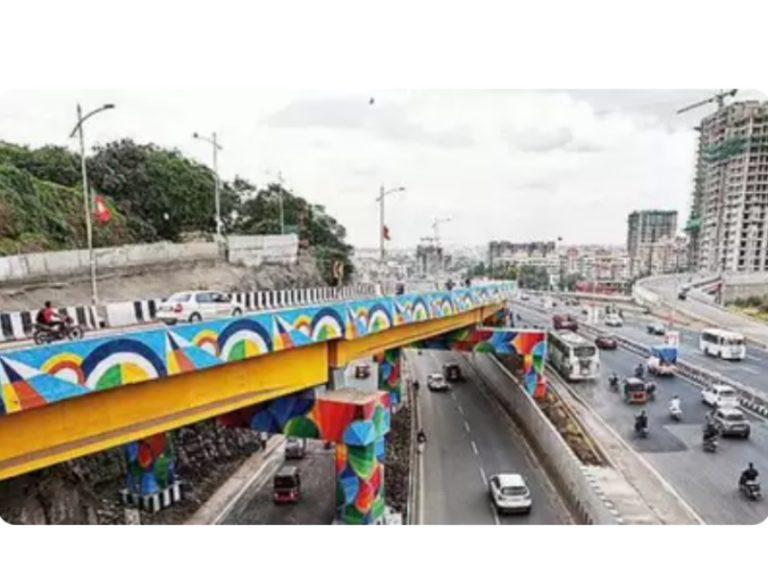Pune’s Chandni Chowk Flyover has officially been unveiled by the Union Minister of Road Transport and Highways, Nitin Gadkari. During its inauguration ceremony, Deputy Chief Ministers, Ajit Pawar as well as Devendra Fadnavis were in attendance.
In a nutshell, the multi-layer flyover road development aims to alleviate traffic congestion within the city. A press release statement from the government revealed that the project’s cost is about Rs 865 crore. Moreover, the statement noted that its funding received contributions from Pune Municipal Corporation.
As a part of the project, a 2.2-kilometer-long interchange was also successfully completed. The key intersection includes 2-lane external services alongside 2-lane internal services on both sides of the highway. Taking it a step further, the development also built an impressive network of eight ramps. This, in turn, enables for the facilitation of travel in eight varying directions from the interchange.
Read Also: India’s Eastern Freight Corridor Unveils 2023 Milestone Goals
Pune’s Chandni Chowk Flyover Total Length
Pune’s Chandni Chowk Flyover stretches 16.98 kilometers, built by the National Highway Authority of India (NHAI). Quite impressively, it features a total of two underpasses and four bridges. Moreover, its development area serves as a critical connection link to various other areas. These include Mulshi Road, Bavdhan, as well as the National Defense Academy. In addition to Paud Road, Pashan, and the Mumbai-Bengaluru bypass.
Groundwork for the flyover began approximately, five years ago. Thus, its present-day completion as well as impact marks a major milestone for the region’s road infrastructure. While speaking about the project, Gadkari highlighted the state’s commitment to delivering cost-effective developments, through the use of advanced technology. The Deputy Chief Minister further said the overall goal aims to transform Pune into a pollution-free, eco-friendly city.
After the road’s inauguration, reports reveal that a road safety meeting was convened by relevant officials. Aside from mitigating traffic congestion. discussions centered on reducing highway accidents. The discussions concluded that more collaboration will occur between vehicle manufacturers and road construction experts.

